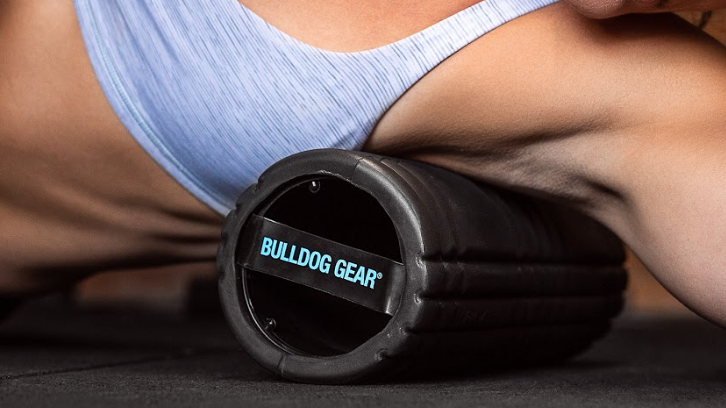|
17/11/2021 | Andrew Tracey Andrew Tracey is a long time collaborator with Bulldog Gear. A coach, writer and current fitness editor of Men’s Health Magazine, he has been in and around the fitness industry for the past 16 years. Having enjoyed and endured a number of disciplines from endurance racing, to strongman, to Crossfit AT enjoys getting neck deep in the practice just as much as the theory. |
Cals, Kilocals, deficits, proteins, carbs, fats, tracking, logging, BMR, MFP, … All terms that seem to have become ubiquitous in the fitness scene over the last few years.
If you’re struggling to keep up, or just need a refresher course- we’ve got you covered.
Consider this your ‘calories and macros cheat sheet’
CALORIES
Generally when referring to calories, we’re talking about kilocalories. A calorie itself is such a small unit that for our purposes we round up by a thousand, so don’t be confused if you hear these measurements used interchangeably and start to worry that you may just have ingested a 400’000 calorie bagel!
The textbook definition of a calories is -
‘The energy needed to raise the temperature of 1 kilogram of water by 1 °C.’
By burning different foods and using this measure, we’re able to gauge how much energy they release, and thus their calorie content. This gives us a broad indication of how much ‘fuel’ various foods will give us.
When we consume a number of calories that’s balanced with the amount of energy we’re expending (we’ll cover that later), our bodyweight will remain the same, however if we consume more calories than we expend, our body will convert and store the additional calories as body fat- this our body’s own natural way of creating an energy reserve for future use. When we under consume calories (versus our expenditure), our body will then tap into this body fat reserve for fuel.
This is crux of weight loss and weight gain.
MACRO’S
‘Macro’s’ or macronutrients are how we further breakdown and define our foods beyond simply looking at the calorie values
The three we’re most concerned with are proteins, carbohydrates and fats.
When it comes to weight loss/ gain, performance and health we have to look at the bigger picture, beyond just counting calories, and look at what types of food makes up these calories.
Looking at the macronutrient content is your first port of call, after the calorie count.
PROTEINS
Proteins, which are made up of amino acids are the building blocks of every cell in our body. Responsible for the function, and regulation of the body's tissues and organs.
Protein isn’t only vital for muscle growth and recovery, but is also works to keep you satiated when calories are lower.
A diet higher in protein (versus the standard western diet), is nearly always correlated with better body composition, health markers and performance.
Protein is found primarily in animal sources such as meat, milk and eggs but is also readily available in other sources such as lentils, nuts, legumes as well as products such as tofu and soy.
Each gram of protein contains 4 calories.
CARBOHYDRATES
Carbohydrates are sugar molecules. Glucose, or blood sugar is the main source of energy for your body and all foods you consume must be converted to glucose in order to be utilised by the body. Carbohydrates, being the closest in structure to glucose already, are therefore a great choice to fuel your body.
Although your body can manufacture glucose from other macronutrients in the absence of carbohydrate rich foods, carbs are your body’s preferred fuel source, and ‘simple’ sugars that are rich in glucose and fast digesting are a fast track to instantly useable energy.
Carbohydrate containing food sources can be found in abundance and include fruits, vegetables, bread, pasta and rice, amongst many more.
Each gram of carbohydrate contains 4 calories
FATS
Despite getting some fairly bad press over the years, fats are an incredibly useful macronutrient.
Fats are extremely energy dense packing in more than twice the amount of calories per gram versus proteins and carbohydrates, fats are also vital for vitamin absorption, hormone regulation, brain development and controlling inflammation.
In the absence of carbohydrates, your body is able to burn dietary fat for fuel although this process is initially inefficient and requires some adjustment. This is not to be confused with your body utilising stored body fat, a process that will occur anytime you consume less calories than you are burning throughout the course of a day.
Fats are commonly found in animal sources such as meat, cheese and eggs, as well as nuts, vegetables and vegetable derived oils.
Each gram of fat contains 9 calories
BMR
Your BMR or basal metabolic rate is the amount of calories your body burns at rest, performing all of your normal bodily functions, without any additional activity on top. This can be estimated using a calculator that takes into consideration a number of factors such as your height, weight, sex and age.
This number however is not the total amount of calories you burn throughout the day, and may be significantly lower.
TDEE
Your total daily energy expenditure, is the sum of your BMR plus all of the other activities you perform throughout the day, these include but are not limited to- exercise, work, digestion and general movement.
Essentially your TDEE is the bill you get for everything you do, each day. If we overpay (by consuming more calories than we’ve burned) we can think of the ‘tip’ we leave as the amount we store as body fat. If we underpay then we’re in the kitchen washing dishes to make up the difference… These dishes are us burning body fat.
You can estimate your TDEE using various online calculators that add a multiplier to you BMR according to your predicted levels of activity, or by wearing a fitness tracker.
Be aware though, both of these methods only offer a prediction.
DEFICIT
A calorie deficit is the state we find ourselves in when we consume fewer calories than we burn. As stated above, in this position of ‘underpaying our energy bill’ our body is forced to release stored body fat into our blood stream for energy. The greater a deficit we create (ie. the fewer calories we consume in relation to our activity level), the more body fat we are forced to call upon for energy.
HOWEVER a larger deficit can leave you feeling lethargic, hungry and can be potentially dangerous. If your goal is to lose body fat the healthiest approach is to ensure that the size of your deficit is manageable, sustainable and doesn’t leave you feeling restricted.
1lb of fat contains around 3500 calories, so a consistent calorie deficit of 500 calories a day, over the course of a week (7x5 equalling 3500) should theoretically amount to 1lb of body fat being burned.
Depending on the make up of your diet, you may lose more weight in the form of water and muscle, so keep in mind that the number on the scales never paints the full picture.



